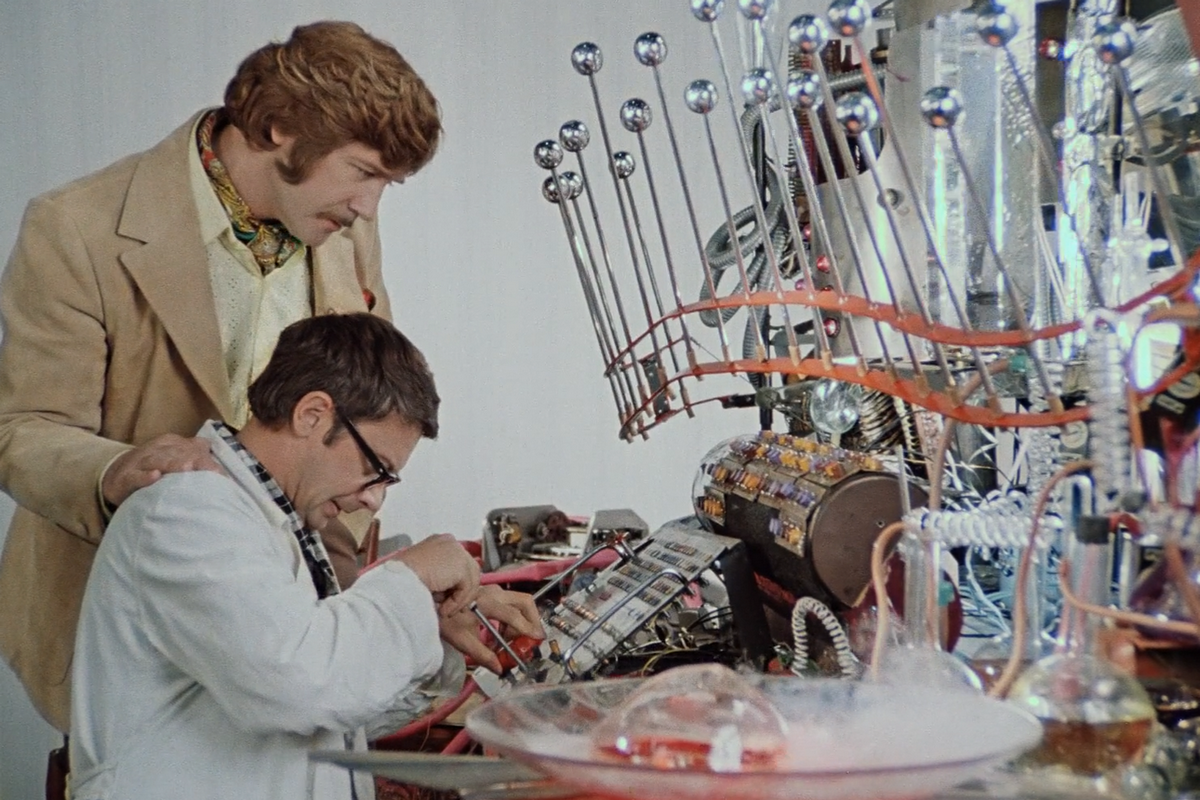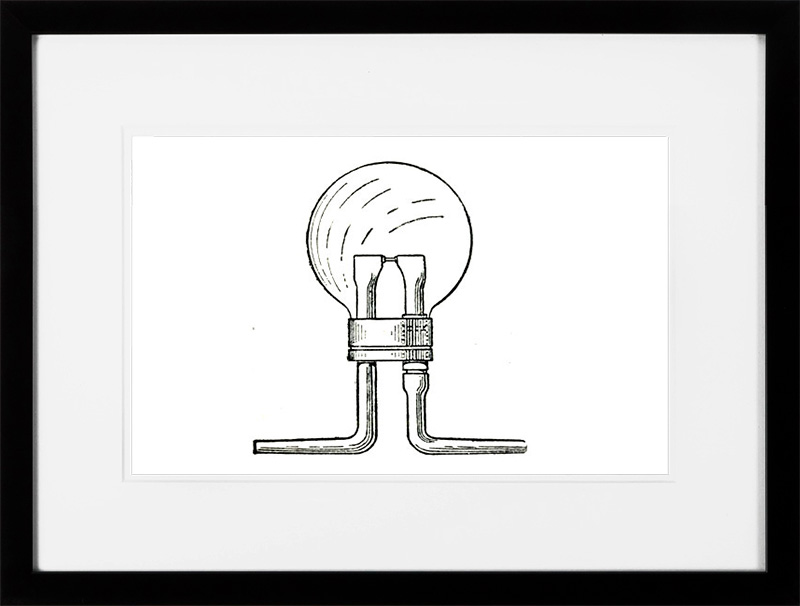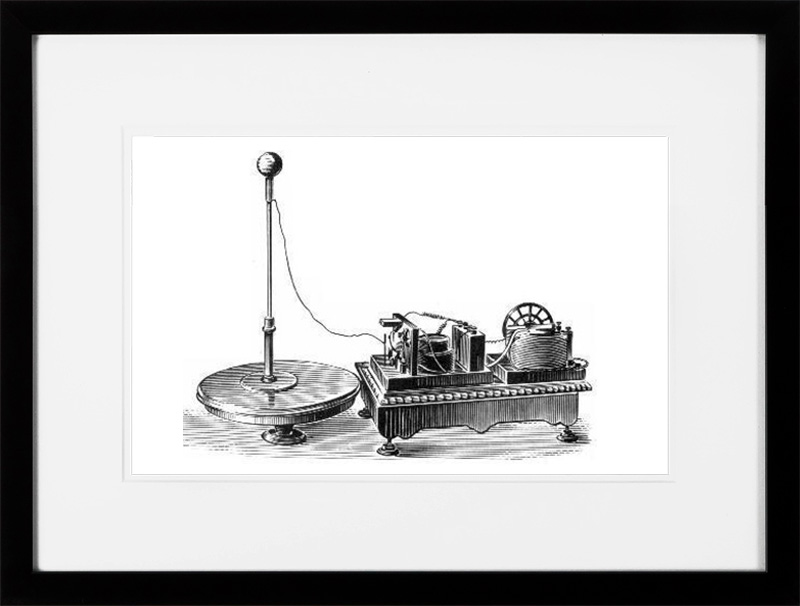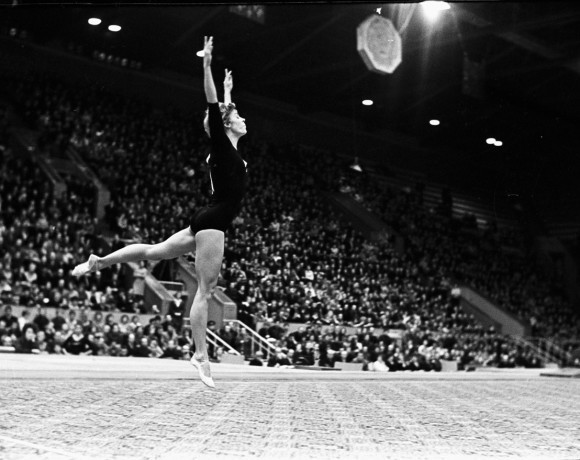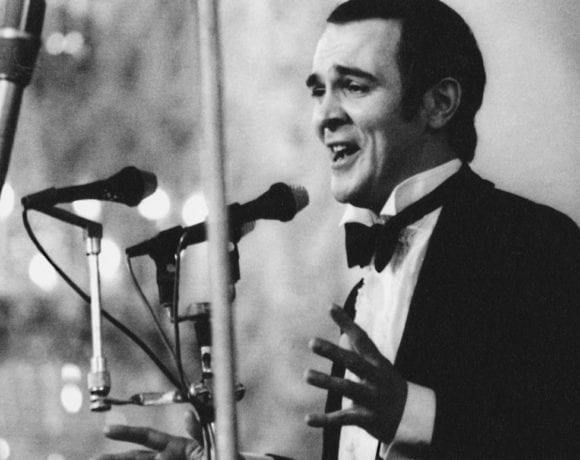Версия на русском языке тут
1. Electric car
It is difficult to imagine the modern world without cars. Of course, much more than one mind had a hand in the invention of this transport, and in improving the machine and bringing it to its current state the number of participants increases significantly and geographically brought together the whole world. But we will specifically note Ippolit Vladimirovich Romanov, since he owns the invention of the world’s first electric car. In 1899, in St. Petersburg, an engineer presented a four-wheeled cab designed to carry two passengers. Among the features of this invention, the diameter of the front wheels significantly exceeded the diameter of the rear ones. The maximum speed was 39 km/h, but a very complex charging system let the cab pass only 60 km at this speed. This electric car became the prototype of the trolleybus that we know today.
2. Monorail
Even today monorails make a futuristic impression, so you can imagine how incredible by the standards of 1820 was the “road on pillars” invented by Ivan Kirillovich Elmanov. The horse-drawn trolley moved along a bar that was mounted on small supports. To Elmanov’s great regret, there was no patron who was interested in the invention, which is why he had to abandon the idea. And only 70 years later, a monorail was built in Gatchina, St. Petersburg province.
3. Electric motor
Boris Semyonovich Jacobi, an architect by education, at the age of 33, while in Konigsberg, became interested in charged particle physics, and in 1834 he made a discovery – an electric motor operating on the principle of rotation of the working shaft. Instantly, Jacobi becomes famous in academic circles, and among many invitations for further education and development, he chooses St. Petersburg University. So, together with Academician Emiliy Khristianovich Lenz, he continued working on the electric motor and created two more variants. The first one was designed for a boat and rotated the paddle wheels. With the help of this engine, the vessel easily kept afloat, moving even against the flow of the Neva River. And the second electric motor was the prototype of a modern tram and rolled a man in a cart along the rails. Among Jacobi’s inventions, electroplating can also be noted – a process that allows you to create perfect copies of the original object. This discovery was widely used to decorate interiors, houses and much more. Among the merits of the scientist is also the creation of underground and underwater cables. Boris Jacobi became the author of about a dozen designs of telegraph machines, and in 1850 invented the world’s first letter-printing telegraph machine, which worked on the principle of synchronous motion. This device was recognized as one of the greatest achievements of electrical engineering in the middle of the XIX century.
4. Color photography
If earlier everything that was happening was trying to get on paper, now the whole life is aimed at getting a photo. Therefore, without this invention, which has become part of a small but rich history of photography, we would not have seen such a “reality”. Sergei Mikhailovich Prokudin-Gorsky developed a special camera and presented his brainchild to the world in 1902. This camera was capable of taking three pictures of the same image, each of which was passed through three completely different light filters: red, green and blue. And without exaggeration the patent obtained by the inventor in 1905 can be considered as the beginning of the era of color photography in Russia. This invention has become much better than the developments of foreign chemists, which is an important fact due to the mass interest in photography around the world.
5. Bicycle
It is considered that all information about the invention of the bicycle before 1817 is doubtful. The story of Yefim Mikheevich Artamonov also belongs to this period. The Ural serf inventor made the first bike ride in about 1800 from the Tagil factory village to Moscow, the distance was about two thousand miles. For his invention, Yefim was granted freedom from serfdom. But this story remains a legend, while the patent of the German professor Karl von Drais from 1818 is a historical fact.
6. Telegraph
Humanity has always been looking for ways to transfer information from one source to another as quickly as possible. Fire, smoke, various combinations of sound signals helped people to transmit distress signals and other emergency messages. The development of this process is undoubtedly one of the most important tasks facing the world. The first electromagnetic telegraph was created by the Russian scientist Pavel Lvovich Shilling in 1832 that he presented in his apartment. He came up with a certain combination of symbols, and each symbol corresponded to a letter of the alphabet. This combination appeared on the device with black or white circles.
7. Incandescent lamp
If you pronounce “incandescent lamp”, then Edison’s last name immediately sounds in your head. Yes, this invention is no less famous than the name of its inventor. However, a relatively small number of people know that Edison did not invent the lamp, but only improved it. While Alexander Nikolaevich Lodygin, being a member of the Russian Technical Society, in 1870 proposed using tungsten filament in lamps, twisting them into a spiral. Of course, the history of the invention of the lamp is not the result of the work of one scientist – rather, it is a series of successive discoveries that were in the air and were demanded by the world, but it was Alexander Lodygin’s contribution that became especially great.
8. Radio
The question of who is the inventor of the radio is disputable. Almost every country has its own scientist, who is credited with the creation of this device. So, in Russia, this scientist is Alexander Stepanovich Popov, and there are many weighty arguments given in his favor. On May 7, 1895, the reception and transmission of radio signals at a distance were demonstrated for the first time. And the author of this demonstration was Popov. He was not only the first to put the receiver into practice, but also the first to send a radiogram. Both events occurred before the patent of Marconi, who is considered the inventor of the radio.
9. Television
The discovery and prevalence of television broadcasting has radically changed the ways information is spread in society. Boris Lvovich Rosing was also involved in this significant achievement, who in July 1907 applied for the invention of a “Method for the electrical transmission of images over distances.” Boris Lvovich managed to successfully transmit and receive an accurate image on the screen of the simplest device yet, the former prototype of the kinescope of a modern TV, which the scientist called an “electric telescope”. Among those who helped Rosing with the experience was Vladimir Zvorykin, then a student at the St. Petersburg Institute of Technology – it was him, and not Rosing, who would be called the father of television in a few decades, although the principle discovered by Boris Rosing in 1911 is the base of the work of all reproducing television devices.
10. Parachute
Gleb Evgenievich Kotelnikov was an actor of the troupe of the People’s House on the Petersburg side. At the same time, impressed by the death of the pilot, Kotelnikov started developing a parachute. Before Kotelnikov, pilots were saved with the help of long folded “umbrellas” fixed on the plane. Their design was very unreliable, furthermore they greatly increased the weight of the aircraft. As a result, they were used extremely rarely. Gleb Kotelnikov proposed his completed project of a knapsack parachute in 1911. But, despite the successful tests, the inventor did not receive a patent in Russia. The second attempt was more successful, and in 1912 in France, the invention got a legal state. But even this fact did not help the parachute to begin widespread production in Russia due to the fears of the chief of the Russian air forces, Grand Duke Alexander Mikhailovich. He thought that at the slightest malfunction, aviators would leave the airplane. It was only in 1924 when Gleb Kotelnikov finally received a national patent, and later transferred all rights to use his invention to the government.
11. Movie camera
In 1893, working together with the physicist Lyubimov, Iosif Andreevich Timchenko created the so-called “snail” – a special mechanism that was used to intermittently change the sequence of frames in the stroboscope. This mechanism later became the basis of the kinetoscope, which Timchenko developed together with engineer Freudenberg. The demonstration of the kinetoscope took place the following year at the congress of Russian doctors and naturalists. Two films were shown: “The Javelin Thrower” and “The Galloping Horseman”, which were filmed at the Odessa Hippodrome. This event even has documentary confirmation. So, the minutes of the meeting of the section says: “Representatives of the assembly have familiarized with the invention of Mr. Timchenko with interest. And, in accordance with the proposals of the two professors, we decided to express our gratitude to Mr. Timchenko.”
12. Machine gun
Since 1913, the inventor Vladimir Grigoryevich Fedorov has begun work consisting in testing an automatic rifle (firing bursts) for a 6.5 mm caliber cartridge, which was the result of his development. Three years later, soldiers of the 189th Izmail regiment are already armed with such rifles. But the serial production of automatic machines was launched only after the end of the October revolution. The designer’s weapons were in service with the Russian army until 1928. But, according to some reports, even during the Winter War with Finland, the troops still used some copies of the Fedorov machine gun.
13. Laser
The history of the invention of the laser began with the name of Einstein, who created the theory of the interaction of radiation with matter. At the same time, Alexey Tolstoy in his famous novel “Hyperboloid of engineer Garin” wrote about the same thing. Up until 1955, attempts to create a laser were not successful. And only thanks to two Russian engineers-physicists – N.G. Basov and A.M. Prokhorov, who developed a quantum generator, the laser began its history in practice. In 1964, Basov and Prokhorov received the Nobel Prize in Physics.
14. Artificial heart
The name of Vladimir Petrovich Demikhov is associated with several operations performed for the first time. Surprisingly, Demikhov was not a doctor – he was a biologist. In 1937, as a third-year student of the biological faculty of Moscow State University, he created a mechanical heart and put it to a dog instead of a real one. The dog lived with the prosthesis for about three hours. After the war, Demikhov got a job at the Institute of Surgery of the Academy of Medical Sciences of the USSR and created a small experimental laboratory there, where he began to do research on organ transplantation. Already in 1946, he was the first in the world to perform a heart transplant from one dog to another. He also performed a heart and lung transplant to a dog at the same moment. And most importantly, Demikhov’s dogs lived with transplanted hearts for several days. It was a real breakthrough in cardiovascular surgery.
15. Anesthesia
Since ancient times, people have dreamed of getting rid of pain. This was especially true of treatment, which was sometimes more painful than the disease itself. Herbs and strong drinks only deaden the symptoms, but did not allow serious actions accompanied by serious pain. This significantly hindered the development of medicine. Nikolai Ivanovich Pirogov is a great Russian surgeon. The world owes him many important discoveries, since he made a huge contribution to anesthesiology. In 1847, he summarized his experiments in a monograph on anesthesia, which was published worldwide. Three years later, for the first time in the history of medicine, he began operating on the wounded with ether anesthesia in the field. In total, the great surgeon performed about 10,000 operations under ether anesthesia. Nikolai Pirogov is also the author of topographic anatomy, which has no analogues in the world.
16. Mozhaisky’s plane
Many minds around the world have worked on solving the most difficult tasks of developing an aircraft. Numerous drawings, theories and even test designs did not give practical results – the plane did not lift a person into the air. Talented Russian inventor Alexander Fedorovich Mozhaisky was the first in the world to create a life-size airplane. Having studied the works of his predecessors, he developed and supplemented them using his theoretical knowledge and practical experience. His results fully resolved the issues of his time and, despite the very unfavorable situation, namely the lack of actual capabilities in material and technical terms, Mozhaisky was able to complete the construction of the world’s first aircraft in 1884. It was a creative feat that glorified Russia forever.
17. Aerodynamics
Nikolai Egorovich Zhukovsky developed the theoretical foundations of aviation and methods of calculating aircraft — and this was at a time when the builders of the first aircraft claimed that “an airplane is not a machine, it cannot be calculated,” and most of all relied on experience, practice and their intuition. In 1904, Zhukovsky discovered the law determining the lifting force of an airplane wing, determined the main profiles of the wings and propeller blades of an airplane; developed the vortex theory of an air propeller.
18. Atomic and hydrogen bomb
Academician Igor Vasilyevich Kurchatov holds a special place in the science of the twentieth century and in the Russian history. An outstanding physicist, he plays an exceptional role in the development of scientific and scientific–technical problems of mastering nuclear energy in the Soviet Union. The solution of this most difficult task, the creation in a short time of the nuclear shield of the Motherland in one of the most dramatic periods in the history, the development of problems of the peaceful use of nuclear energy was the main business of his life. It was under his leadership that the most terrible weapon of the post-war period was created and successfully tested in 1949. And already in 1961, a group of nuclear physicists from the Kurchatov laboratory created the most powerful explosive device in the entire history of mankind – the AN 602 hydrogen bomb, which was immediately assigned a quite appropriate historical name — “tsar bomb”. During the test of this bomb, the seismic wave resulting from the explosion went around the globe three times.
19. Rocket and space technology plus practical cosmonautics
The name of Sergei Pavlovich Korolev characterizes one of the brightest pages in the history of our country – the era of space exploration. The first artificial satellite of the Earth, the first human flight into space, the first spacewalk of an astronaut, the long–term operation of the orbital station and much more are directly related to the name of Academician Korolev, the first Chief Designer of rocket and space systems. From 1953 to 1961, Korolev’s every day was scheduled by the minute: simultaneously he worked on projects for a manned spacecraft, an artificial satellite and an intercontinental rocket. October 4, 1957 when the first sputnik was launched into an elliptical low Earth orbit, was a great day for world cosmonautics: after that, the satellite flew through Soviet pop culture for another 30 years and even registered in the Oxford Dictionary as “sputnik”. Well, about what happened on April 12, 1961, it is enough to say “a man in space”, because almost every man on the Earth knows that we are talking about Yuri Gagarin flight.
20. Mil helicopters
During the Great Patriotic War, Academician Mikhail Leontyevich Mil worked in evacuation in the village of Bilimbai, mainly engaged in improving combat aircraft, improving their stability and controllability. His work has been awarded five government awards. In 1943, Mil defended his PhD thesis “Criteria for controllability and maneuverability of an aircraft”; in 1945, he defended his doctoral thesis: “Dynamics of a rotor with articulated blades and its application to the problems of stability and controllability of an autogyro and a helicopter”. In December 1947 , Mikhail Mil became the chief designer of the experimental design bureau for helicopter construction. After a series of tests in early 1950, a decree was issued on the creation of an experimental series of 15 GM-1 helicopters under the designation Mi-1.
21. Andrey Tupolev’s planes
Andrey Tupolev’s design bureau has developed more than 100 types of aircraft and 70 of them were mass-produced. With the participation of its aircraft, 78 world records were set, 28 unique flights were performed, including the rescue of the crew of the Chelyuskin steamer with the participation of the ANT-4 aircraft. Non-stop flights of Valery Chkalov and Mikhail Gromov’s crews to the United States via the North Pole were carried out on ANT-25 aircraft. In scientific expeditions “North Pole” Ivan Papanin also used ANT-25 aircraft. A large number of bomber aircraft, torpedo bombers, Tupolev reconnaissance aircraft and torpedo boats were used in combat operations in the Great Patriotic War in 1941-1945. Together with Alexey Tupolev, the Tu-144 supersonic passenger aircraft was developed. Tupolev aircraft became the basis of the Aeroflot fleet, and were also operated in dozens of countries around the world.
22. Eye microsurgery
Millions of doctors, having received a diploma, are eager to help people, dream of future achievements. But most of them are gradually losing their former fuse: no aspirations, the same thing from year to year. Instead, Svyatoslav Fedorov’s enthusiasm and interest in the profession only grew from year to year. Only six years after the institute, he defended his PhD thesis, and in 1960 in Cheboksary he performed a revolutionary operation to replace the eye lens with an artificial lens. Similar operations were carried out abroad before, but in the USSR they were considered pure quackery, and Fedorov was fired from his job. After that, he became the head of the Department of Eye Diseases at the Arkhangelsk Medical Institute. It is where “Fedorov empire” began in his biography: a team of like-minded people gathered around the untiring surgeon, ready for revolutionary changes in eye microsurgery. People from all over the country came to Arkhangelsk with the hope of regaining their lost sight, and they really saw the light. The innovative surgeon was also appreciated “officially” – so, together with his team, he moved to Moscow. And he began to do absolutely fantastic things: to do vision correction with the help of keratotomy (special notches on the cornea of the eye), to transplant a donor cornea, developed a new method of glaucoma surgery, became a pioneer of laser microsurgery of the eye.
23. Tetris
Mid-80s. A time shrouded in legends. Alexey Pajitnov created the idea of Tetris in 1984 after getting acquainted with the puzzle of the American mathematician Solomon Golomb, called Pentomino Puzzle. The essence of this puzzle was quite simple and very familiar to everyone: from several figures it was necessary to assemble one large one. Alexey decided to make a computer version of pentamino. Pajitnov not only took the idea, but also supplemented it: in his game, it was necessary to collect figures in real time, and the figures themselves consisted of five elements and could rotate around their own center during the fall. But the computers of the Computing Center could not do it — it was simply not enough resources for the electronic pentamino. Then Alexey decides to reduce the number of blocks in falling figures from five to four. So the pentamino turned out to be a tetramino. Alexey calls the new game “Tetris”.
The materials translated into English by Vladimir Grebnev


